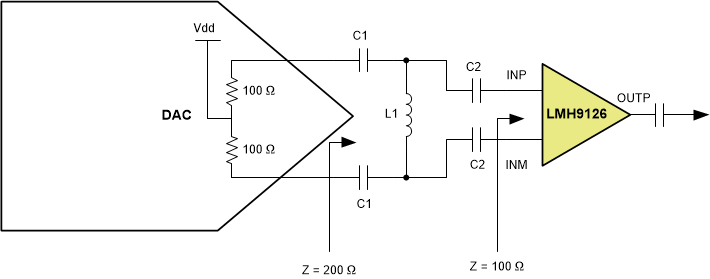SNLS634 June 2020 LMH9126
PRODUCTION DATA.
8.2.1 Design Requirements
Input of LMH9126 is matched to 100 Ω and therefore can be directly driven by a DAC that has 100 Ω termination without any external matching network. If a DAC with different termination is used, then it should be appropriately matched to get the best RF performance.
The example in Figure 19 shows how LMH9126 can be matched to a DAC that has 200-Ω differential termination.
 Figure 19. LMH9126 Driven by a DAC With 200-Ω Termination
Figure 19. LMH9126 Driven by a DAC With 200-Ω Termination